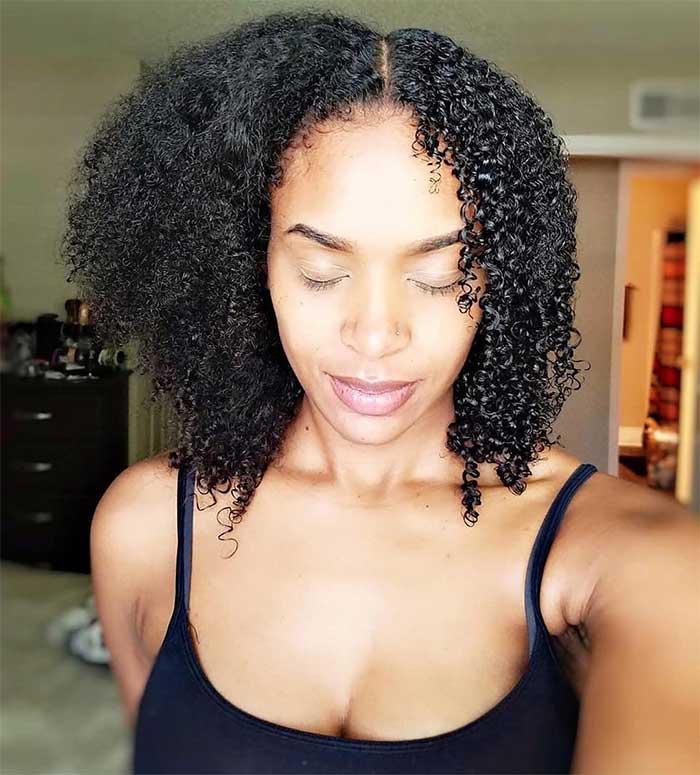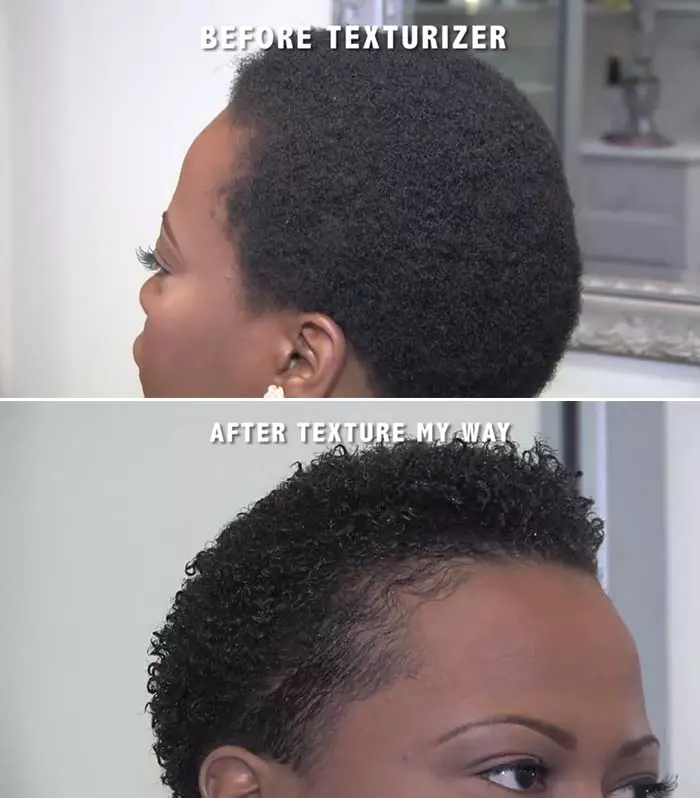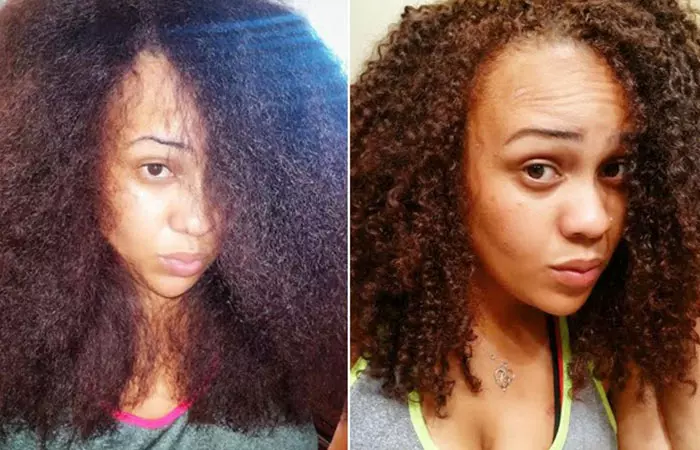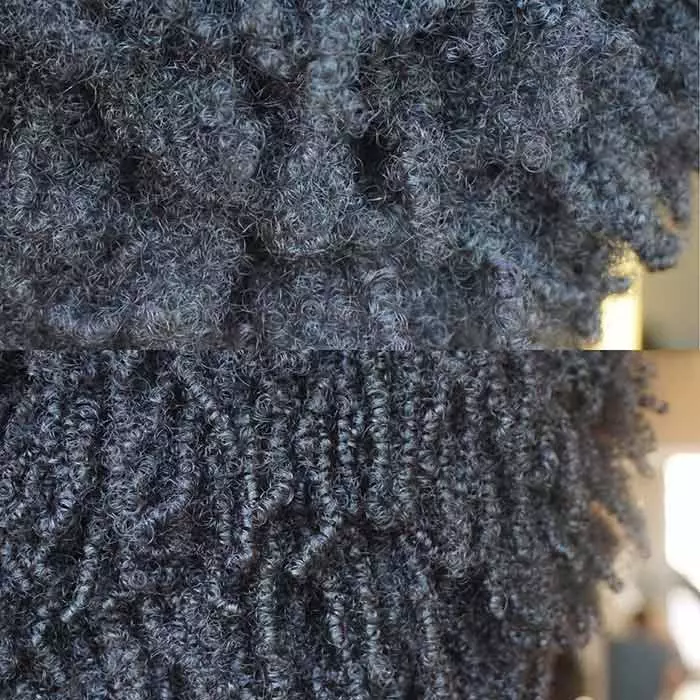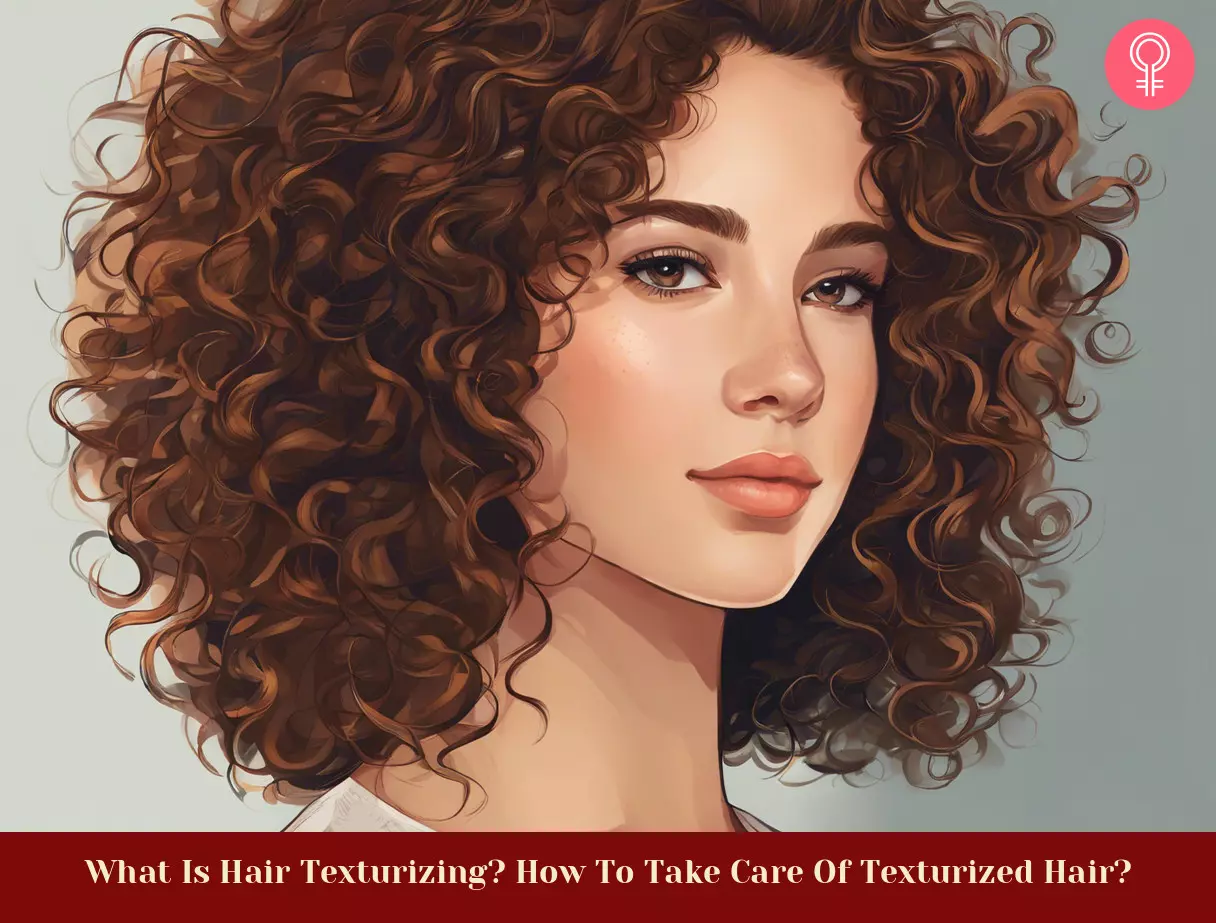What Is Texturized Hair?
This is a common question. Hair texturizing is not a new concept. It has been around since the 1990s and was mostly done by African-American women. Women of color opted for this process to relax their tight curls. Textured hair is different from texturized hair. In texturizing, the existing curl pattern is devolved into loose curls without completely straightening it. Thus, it helps in curl creation and provdes a natural look enhancement. Though texturizing is a chemical-based process, it is much milder than hair relaxing. Moreover, texturizers do not disrupt the natural curl pattern entirely, as opposed to relaxing wherein the natural texture of your hair is completely transformed (1). Why would anyone want to texturize their hair? Turns out, it offers a ton of benefits. Let’s take a look at them.
What Are The Benefits Of Texturized Hair?
Adds volume to your hair and help in dimension and depth creation by breaking the uniformity of hair strands Reduces flyaways, frizz, and unruly hair. Imparts shine to your locks and help in wave creation. Gives you lighter and more manageable curls. Growing out texturized hair is easier than growing out relaxed hair. Makes it easier to comb and detangle your hair and helps in breakage prevention and split end prevention by reducing the tension on the hair strands. Creates texture variation in the hair, making it look more interesting and dynamic. Helps in color enhancement of your hair, which may help in contrast creation and depth creation. Makes it easier to straighten your hair and provides styling versatility, which allows you to try out new hairstyles.
Note: A texturizer might use chemicals that change the pH balance of your scalp or hair. It may cause irritation or burns. Hence, do a patch test before using a texturizer to make sure your hair works well with it.
Texturized Hair – Before And After
As mentioned earlier, texturizing may not make a groundbreaking difference, but it will give you a desirable outcome. If you have type 4 (A, B or C) hair, texturizing it may bring it down to type 3 curls with a much softer texture. After texturizing, your hair will not be resistant to styling. Texturized Short Hair Texturized Medium Hair Texturized Kinky Hair Now, let’s look at the differences between texturizers and relaxers.
Texturizers Vs. Relaxers
There is a minor difference between a texturizer and a relaxer, which can be quite confusing. Both contain chemicals that lead to hair texture variation. The only difference lies in the time factor. The purpose of a texturizer is to loosen the curls to some extent and not straighten them. Texturizers release the tight curls into waves and make brushing your hair easier. A relaxer will straighten your hair completely. Relaxers contain sodium hydroxide that alters the pH of your hair, making it straight and sleek. The damage caused by a relaxer is much higher than by a texturizer. A texturizer contains botanical ingredients that are smeared on your hair for 5 to 10 minutes. Relaxers are typically left on your hair for 15 to 20 minutes and need to be processed by a neutralizer and a conditioner. These heavily loaded chemicals in a relaxer may cause permanent damage to your curls if done on a regular basis. Texturized Hair And Relaxed Hair Now that you know what hair texturizing is, let’s look into the process of texturizing and how it is actually done.
The Process Of Texturizing
A texturizer may permanently alter the structure of your hair. The chemicals in it modify the keratin (proteins) in your hair, which aids in structure creation. Your hair is made up of amino acids that lend it its curliness. When a texturizer is applied, the hydrogen bonds in amino acids are broken, which results in looser curls. It can help you achieve the perfect hair makeover of your dreams. There are two types of texturizers – one contains lye formula, and the other does not. Lye formula is harmful to your hair and can burn your scalp if used rigorously. If you have S-shaped curls (light curls), you may see a drastic change. But if you have Z-shaped curls, the results can’t be predicted. The sitting time for texturizer is between 5 to 10 minutes. It is important to wash out a texturizer with a neutralizer to terminate the chemical process. Keep in mind that a texturizer can be harmful to your hair if done on a regular basis. It is recommended to use herbal conditioners or protein treatments to protect your hair from damage. Pros
You can get silky, soft, and manageable hair instantly. You need not visit expensive parlors for texturizing. This process can be carried out at home. Has long-lasting results.
Cons
The results may not be uniform for every hair type. Texturizers contain harmful chemicals.
Maddy, a blogger, recounted her negative experience with texturizers in her blog. She said, “To this day, I regret putting a texturizer in my hair. Yes, it “loosened the curl” but it also made my hair break more.I remember days in the bathroom combing my hair and hearing snap crackle pop and seeing my hair all over the floor! (i).” Since hair texturizing is a chemical treatment, you need to take proper care of your hair after getting it done. Given below are a few maintenance tips that you need to follow to nourish your hair and keep it looking healthy.
How To Take Care Of Texturized Hair
Is it possible to change your hair texture with natural products? Yes, the key point is to enhance the moisture levels in your hair. Use 100% organic shampoos that hydrate your scalp and soften the texture of your hair. After taking a shower, use natural methods of drying your hair instead of using a blow dryer. How is argan oil useful in improving hair texture? Argan oil is rich in vitamins A, C, and E. It can be used as a leave-in conditioner to soften rough and frizzy hair. It is loaded with antioxidants and linoleic and omega-6 fatty acids that help in moisturizing your scalp and hair and relaxing tight curls. Can you change your hair texture through surgery? No, you cannot change your hair texture through surgery. You can use chemical treatments or natural products to do so. Does texturizing hair make it look thicker? Yes, texturizing aids in thickness enhancement and uplifts your hair. It adds volume to your mane and makes it appear longer too.
Illustration: What Is Hair Texturizing? How To Take Care Of Texturized Hair?
Learn how to do advanced texturing and haircutting with this easy-to-follow tutorial. Get the perfect look with expert tips and tricks by clicking on this video.
